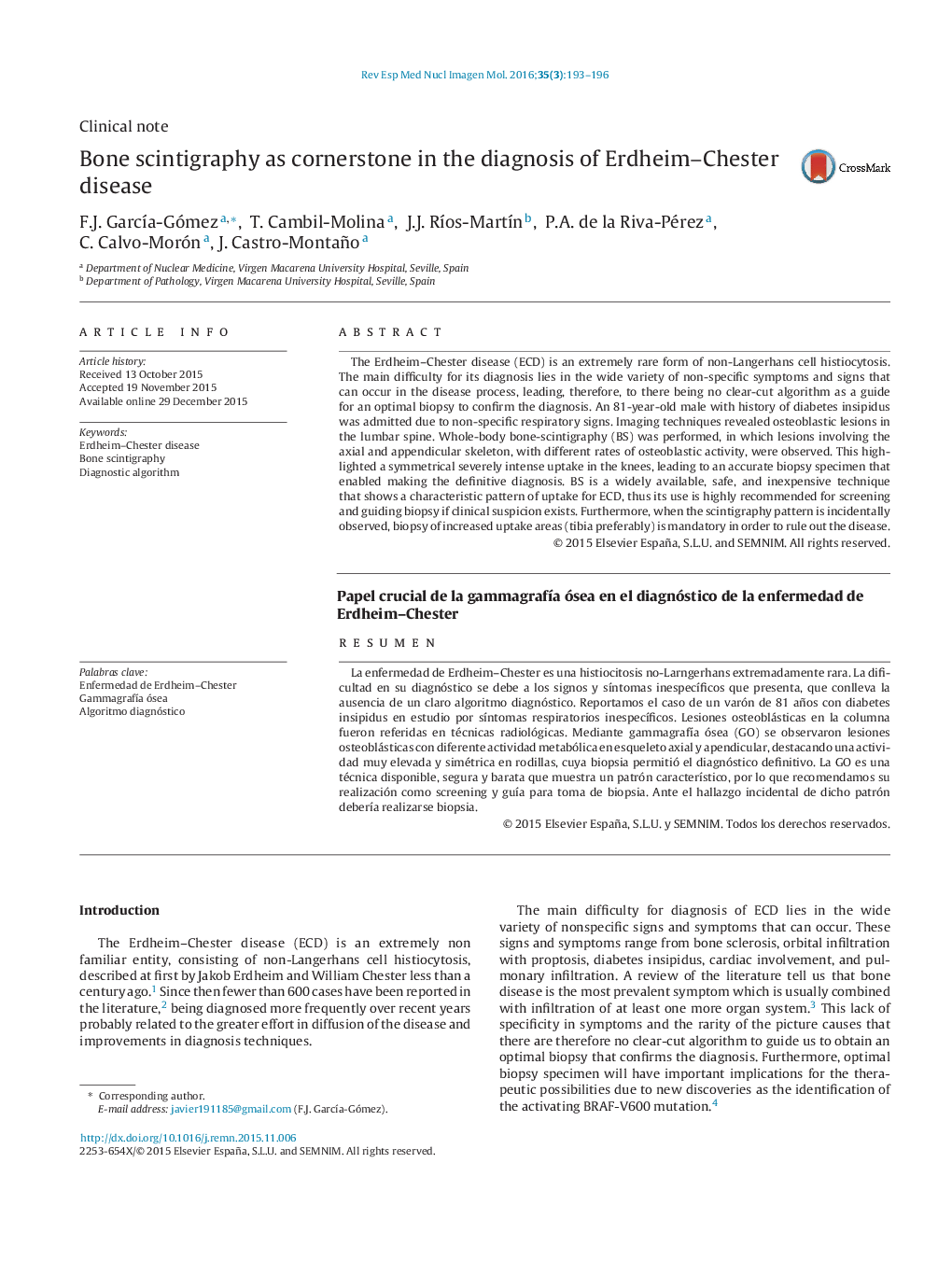| Article ID | Journal | Published Year | Pages | File Type |
|---|---|---|---|---|
| 4249670 | Revista Española de Medicina Nuclear e Imagen Molecular | 2016 | 4 Pages |
The Erdheim–Chester disease (ECD) is an extremely rare form of non-Langerhans cell histiocytosis. The main difficulty for its diagnosis lies in the wide variety of non-specific symptoms and signs that can occur in the disease process, leading, therefore, to there being no clear-cut algorithm as a guide for an optimal biopsy to confirm the diagnosis. An 81-year-old male with history of diabetes insipidus was admitted due to non-specific respiratory signs. Imaging techniques revealed osteoblastic lesions in the lumbar spine. Whole-body bone-scintigraphy (BS) was performed, in which lesions involving the axial and appendicular skeleton, with different rates of osteoblastic activity, were observed. This highlighted a symmetrical severely intense uptake in the knees, leading to an accurate biopsy specimen that enabled making the definitive diagnosis. BS is a widely available, safe, and inexpensive technique that shows a characteristic pattern of uptake for ECD, thus its use is highly recommended for screening and guiding biopsy if clinical suspicion exists. Furthermore, when the scintigraphy pattern is incidentally observed, biopsy of increased uptake areas (tibia preferably) is mandatory in order to rule out the disease.
ResumenLa enfermedad de Erdheim–Chester es una histiocitosis no-Larngerhans extremadamente rara. La dificultad en su diagnóstico se debe a los signos y síntomas inespecíficos que presenta, que conlleva la ausencia de un claro algoritmo diagnóstico. Reportamos el caso de un varón de 81 años con diabetes insipidus en estudio por síntomas respiratorios inespecíficos. Lesiones osteoblásticas en la columna fueron referidas en técnicas radiológicas. Mediante gammagrafía ósea (GO) se observaron lesiones osteoblásticas con diferente actividad metabólica en esqueleto axial y apendicular, destacando una actividad muy elevada y simétrica en rodillas, cuya biopsia permitió el diagnóstico definitivo. La GO es una técnica disponible, segura y barata que muestra un patrón característico, por lo que recomendamos su realización como screening y guía para toma de biopsia. Ante el hallazgo incidental de dicho patrón debería realizarse biopsia.
